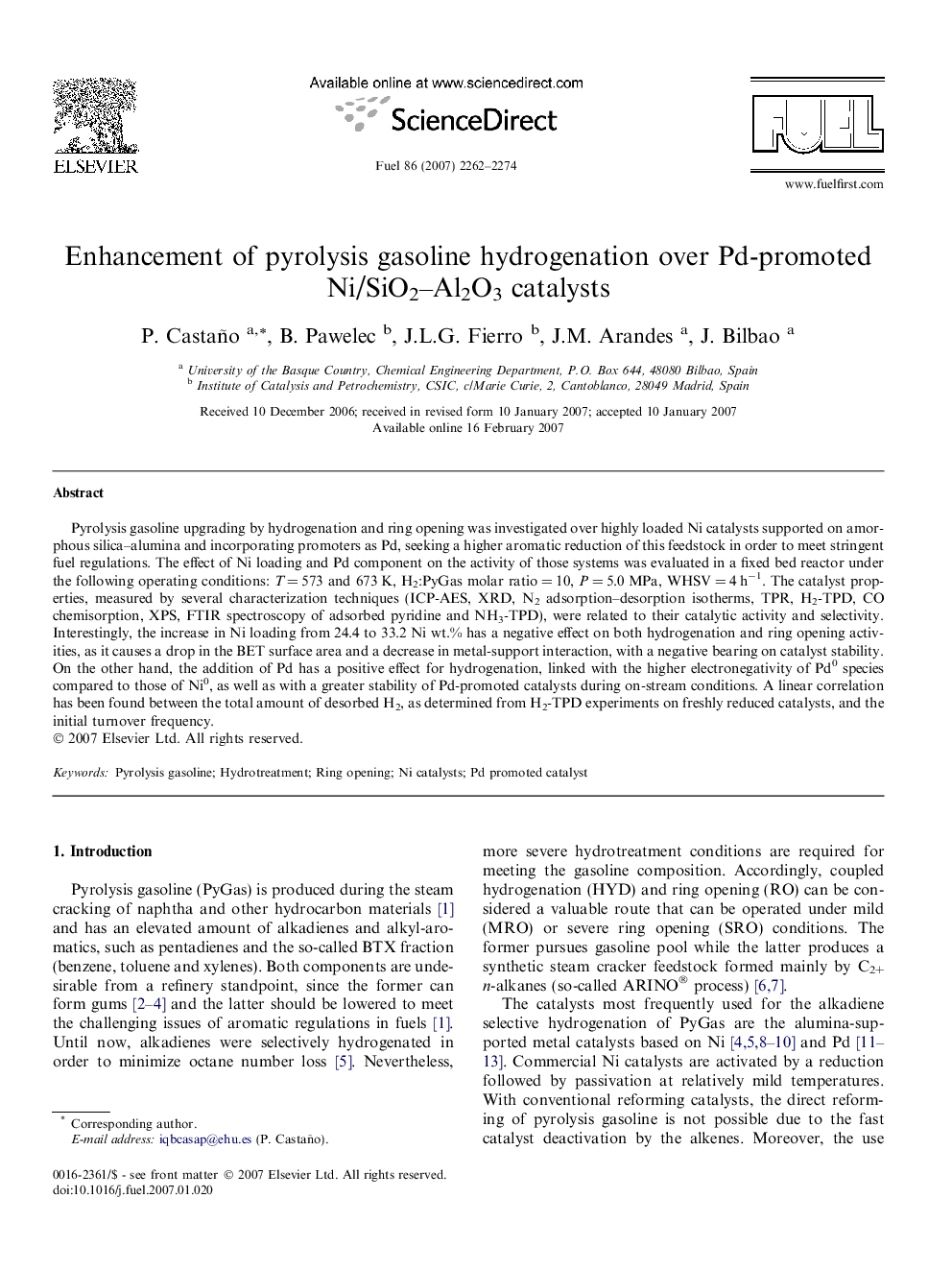| Article ID | Journal | Published Year | Pages | File Type |
|---|---|---|---|---|
| 208192 | Fuel | 2007 | 13 Pages |
Pyrolysis gasoline upgrading by hydrogenation and ring opening was investigated over highly loaded Ni catalysts supported on amorphous silica–alumina and incorporating promoters as Pd, seeking a higher aromatic reduction of this feedstock in order to meet stringent fuel regulations. The effect of Ni loading and Pd component on the activity of those systems was evaluated in a fixed bed reactor under the following operating conditions: T = 573 and 673 K, H2:PyGas molar ratio = 10, P = 5.0 MPa, WHSV = 4 h−1. The catalyst properties, measured by several characterization techniques (ICP-AES, XRD, N2 adsorption–desorption isotherms, TPR, H2-TPD, CO chemisorption, XPS, FTIR spectroscopy of adsorbed pyridine and NH3-TPD), were related to their catalytic activity and selectivity. Interestingly, the increase in Ni loading from 24.4 to 33.2 Ni wt.% has a negative effect on both hydrogenation and ring opening activities, as it causes a drop in the BET surface area and a decrease in metal-support interaction, with a negative bearing on catalyst stability. On the other hand, the addition of Pd has a positive effect for hydrogenation, linked with the higher electronegativity of Pd0 species compared to those of Ni0, as well as with a greater stability of Pd-promoted catalysts during on-stream conditions. A linear correlation has been found between the total amount of desorbed H2, as determined from H2-TPD experiments on freshly reduced catalysts, and the initial turnover frequency.
